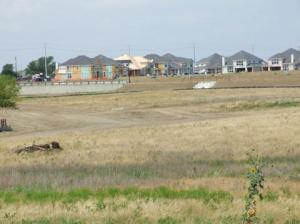
A research paper posted on PLOS entitled Whither the Rangeland?: Protection and Conversion in California’s Rangeland Ecosystems highlights the problem that exists everywhere but is a particular concern in the Sacramento area. Though the paper is pretty science-y, and does not emphasize the carbon impact of rangeland conversion, it is worth a read for all the other impacts and loss of public resources and ecosystem services entailed when rangelands are converted. It say this about Sacramento:
“The vast majority of the development in the Sacramento Metro region occurred in the grasslands and woodlands leading to the Sierra Nevada foothills east of Sacramento, with large conversions directly adjacent to the existing urbanized area (Figure 5).”
The SacBee article “Lost California rangeland is said to pose greenhouse gas risk” puts this rangeland loss in the context of greenhouse gas (GHG) reduction goals required by A.B. 32, the California Global Warming Solutions Act of 2006. From the SacBee article:
A study by UC Davis plant scientist Louise Jackson found that conversion from rangeland to irrigated cropland correlated to a threefold increase in greenhouse gas emissions per unit of land. When rangelands were converted to development, that number increased exponentially. Urban areas account for 217 times more greenhouse gas emissions.
I’ve asked Louise Jackson for more information on this statistics quoted, but so far no response.
My take on all of this is that we cannot possibly meet our climate change goals if we continue to convert rangelands to exurbs. This development form, which Sacramento so dearly loves, and the surrounding counties like as well, is simply not tenable if we are to have a future free of traumatic climate instability and warming. Every greenfield development, which in this area is almost always a conversion of rangelands, must be stopped. Now.